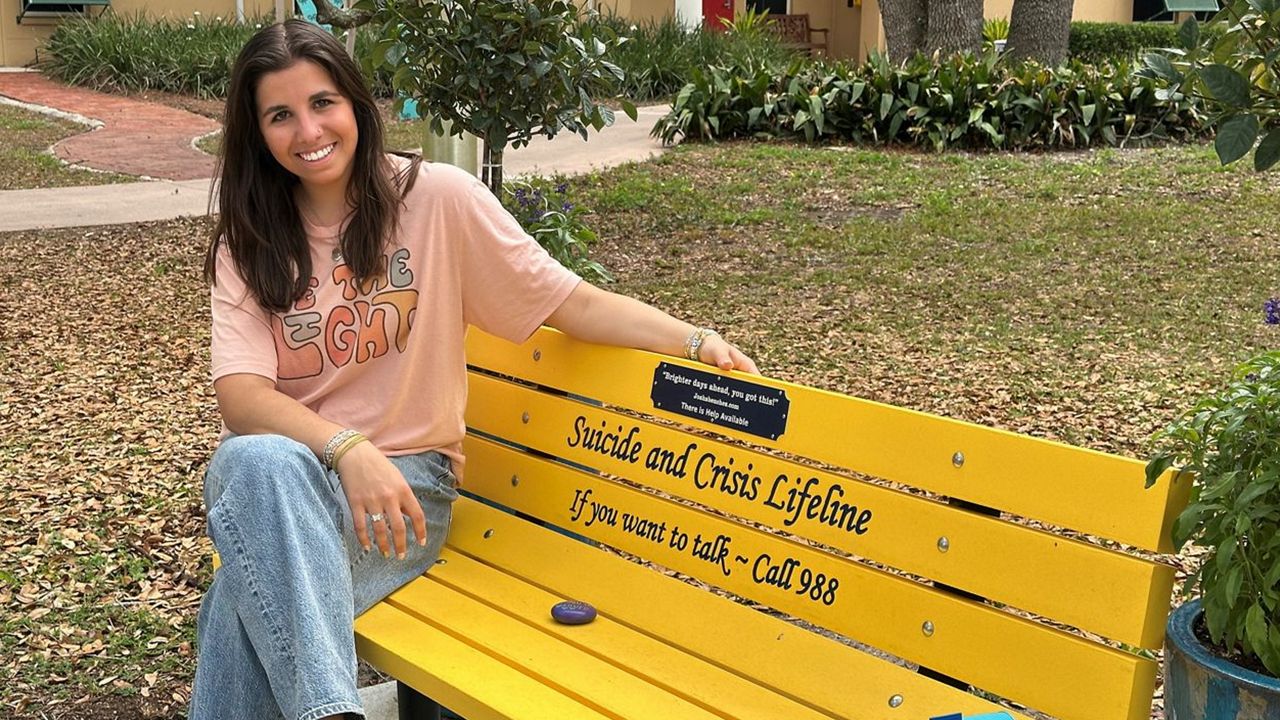PINELLAS COUNTY, Fla. — A new study by the journal Pediatrics found visits to the emergency room for those ages five to nineteen with suicidal thoughts increased 59%.
What You Need To Know
- A new study by the journal Pediatrics found visits to the emergency room for those ages five to nineteen with suicidal thoughts increased 59%
- Experts at Johns Hopkins All Children’s Hospital (JHAC) say that increase is being seen locally, too, and it’s concerning
- A man who attempted suicide the first time at age 13 shared his story of recovery to help prevent suicide and raise awareness
Experts at Johns Hopkins All Children’s Hospital (JHAC) say that increase is being seen locally, too, and it’s concerning.
“My heart is saddened and my head is frustrated,” said Dr. Jennifer Katzenstein, director of psychology, neuropsychology and social work at JHAC.
“These are opportunities for us to be able to intervene with these children early to make sure that they get all the help that they need.”
A man who attempted suicide the first time at age 13 shared his story of recovery to help prevent suicide and raise awareness.
“This is that kid who just wanted to be free, loving life,” says 37-year-old Herbie Mack as he showed a photo of him as a young boy.
“Looking at things and just like trying to express myself but then at this age, I’m having all these male figures like, ‘Hey man, you’re showing your emotions too much, keep it bottled up inside,’” as he reflects on his childhood.
That little boy listened — now 37-years-old, Mack says bottling up those feelings almost cost him his life.
“I’m a multiple time suicide survivor,” shared Mack.
The first attempt at age 13, Mack says was after being bullied at a new school.
“I had so many questions and so many emotions I was going through,” said Mack. “I thought that ending my life was going to be the best decision.”
Into adulthood, Mack battled alcoholism and would attempt taking his life several more times. He says a call for help led him to recovery, all part of what he shares when he speaks publicly about his story.
“It’s okay to speak up, and it’s okay to ask for help, it’s not a sign of weakness, it’s actually a sign of strength,” Mack said.
Mack says continued support helps keep him on what he calls a path of hopelessness to happiness.
“That plan is part of journaling, part of exercising, having a great support team and also acknowledging my feelings.”
Part of that support is connecting with Dr. T.C. Copper, Founder of Suicide Prevention Training Institute.
“Our mission is to reduce suicide within our community,” said Dr. Copper.
“You can make a change, you can make a difference and suicide can be prevented if we’re all working as a community.”
The men are making a change, Dr. Cooper a mentor. The Navy veteran and psychologist inspires Mack.
“I look at him like a father figure, so it’s been amazing,” said Mack.
Mack, now a father of two, has his own advice for the little boy back in that photo and for other children struggling.
“Don’t hold those emotions inside, I thought that was the best decision I could do and I’m glad that I failed at that,” said Mack.
Dr. Katzenstein says some warning sign to watch out for in your children can include:
- Changes in behavior
- Changes in previously-enjoyed activities
- Changes in sleep & appetite
- Feeling down, hopeless, worried, nervous, irritable
“We want to make sure that we’re recognizing them when they’re in their pediatricians’ offices, that we’re providing parents the tools to know what those signs and symptoms of anxiety, depression or suicidal thoughts look like and also giving them the tools to know where to go,” said Mack.
If you or someone you care for is in crisis, call 988, the Suicide and Crisis Lifeline.
Also, reach out to your child’s pediatrician and resources like NAMI.









